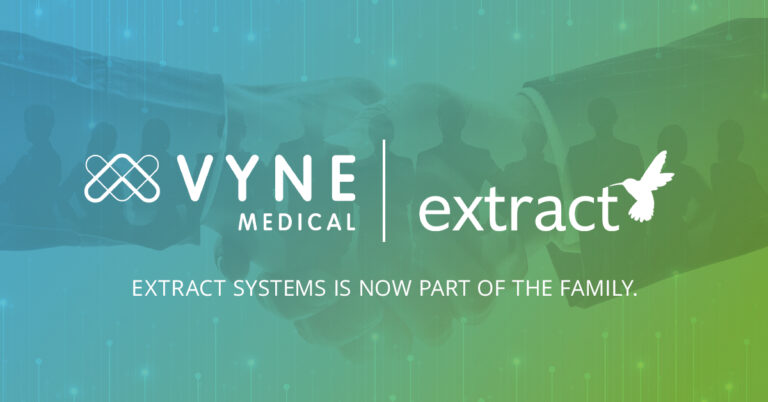
Seven Steps In Choosing A Healthcare IT Vendor
Historically, healthcare organizations have been slow to adopt new IT software solutions due to a variety of reasons. The most common can be concerns around cost, ease-of-use, and a belief that adding to their electronic health record (EHR) will be disruptive to both their business and clinical workflows. However, the reality is that without the right technology in place, critical functions of care delivery documentation and medical data collection will continue to be negatively impacted by inefficient and error-prone manual workflows that rely on paper.
While the benefits of moving from paper processes to an electronic solution far exceed the costs, it’s important to understand the needs of your organization and how software can help. Is software shopping on the agenda for 2022? If so, here are a few things to consider when identifying the right vendor partner:
One – Know Your Needs.
Knowing what you need out of a software solution is the first step. This might be an obvious step, but it is an important one. Providers should have a solid understanding of what outcomes they’re looking to achieve with a health IT solution.
Ways to start honing needs include:
-
Identify groups from each stakeholder department (e.g HIM, lab analysts, physicians)
-
Conduct process audits with each user group
-
Map out critical processes (electronic and otherwise)
-
Identify bottlenecks within these processes
-
Categorize bottlenecks as software, hardware, or user-based
Two – Build a Team.
Including a range of staff members in the buying process can help ensure you select the right solution for your organization – one that solves the needs of the many, versus the needs of the few. Involving an administrator in all IT related trainings will also help to better understand the deployed software and how it fits into different workflows.
Three – Do Your Research and Talk With Vendors.
Another important step in health IT planning is research and education.
Attending tradeshows is a great way to research potential technology partners, as attendees can compare multiple solutions in one location and network with other software users to get a sense of what’s working for them. Tapping into peer networks, like user groups, can help providers to learn what challenges or successes others are experiencing and, most importantly, how well their vendor partner is supporting them.
Additionally, blog publications that discuss upcoming industry changes impacting the market are also great sources of information.
Once you find a short list of vendors you have interest in: start to seek out referrals from the prospective vendor’s current or former clients. Website testimonials are a great place to start, but transparent feedback from an unbiased third party is far more useful. Once you are in talks with the vendor, ask them to provide client references, and call a handful of those clients to learn more about their experiences.
During these calls, ask the important questions: Are vendor personnel knowledgeable, experienced, efficient, and supportive? What impact has the relationship had on the client’s bottom line? Are patients well cared for? Getting answers to questions like these will help you make the decision that’s ultimately best for your practice.
Four – See a Demo, or Two.
Healthcare technology vendors can often talk for hours about platform features and benefits, but you should never tie yourself to a solution that you haven’t seen in action. Assess each platform from both an administrator’s and a patient’s perspective to ensure it streamlines the complexities of the healthcare experience. You should be able to see exactly how the platform will help you achieve your objectives prior to making an investment.
During those demos, ask questions that can help you understand what additional attributes a prospective vendor might offer as you assess whether you can justify the expense. Do they use innovative machine learning approaches to create efficiency in client operations? Are they eager to share data related to industry trends and best practices? Do they have an innate ingenuity and curiosity to constantly enhance their solutions and do better?
Five – Look at the Long-Term Objectives.
Getting pricing from a vendor is one thing but one should also conduct financial analysis to determine what kind of investment is needed to get from your current state to your target state. As you review vendor pricing models, map each expense to your overarching objectives, and be honest with your prospective vendor about why certain costs don’t make sense.
Every provider is unique, no workflow is ever the same, and all have their own set of challenges. A good IT vendor will structure its offering to meet your needs. While no relationship is perfect, partnering with vendor that you trust to work on your behalf will make obstacles easier to navigate and enable you to focus on what matters most: providing excellent patient care.
Six – Select a Vendor.
Budgets have been approved. Contracts are signed. Congratulations!
Seven – Implementation.
Once a software vendor partner has been selected, providers should focus on making implementation as efficient as possible. Don’t overlook how implementation is going to roll out. Think about timelines that are attainable (from both the provider side as well as on the vendor side) and who all needs to be involved in the process. Care teams can often be skeptical of new technologies, which is why it is important to leverage the right tools and training to make your implementation process successful.
Here at Extract, it is our mission is to improve patient care and reduce the cost of healthcare by delivering data to the EMR so that physicians and staff can quickly diagnose and treat their patients.
Electronic medical records were developed and designed with the assumption that a patient would be receiving care from their producer in a physical clinic- but with shifts in technology (hello telehealth) or pandemics like COVID-19, organizations are going to have to shift their workflows to become more automated, which is why we developed our platform, HealthyData.
We know that each organization has very different methodologies when it comes to these unstructured documents. It creates a need for staff to manually enter in key data from those documents into the EMR. This manual process is both time consuming and error prone.
HealthyData uses an advanced OCR engine and document clues to ensure all the necessary data is identified and collected. The key data is then routed and sent to the appropriate department or system. Criteria is applied based on document type or other information contained within a given file. Our platform can integrate with an organization’s existing systems- such as an EHR, HIS, LIS or ECM platform. Once the data has been captured and routed, the information is then able to be reported on. This allows stakeholders to see analyzed and trended reports on their business insights.
If you are interested in learning more about Extract’s IT solutions, how its currently being used, and how it could work for your organization please reach out to us today at info@extractsystems.com.



